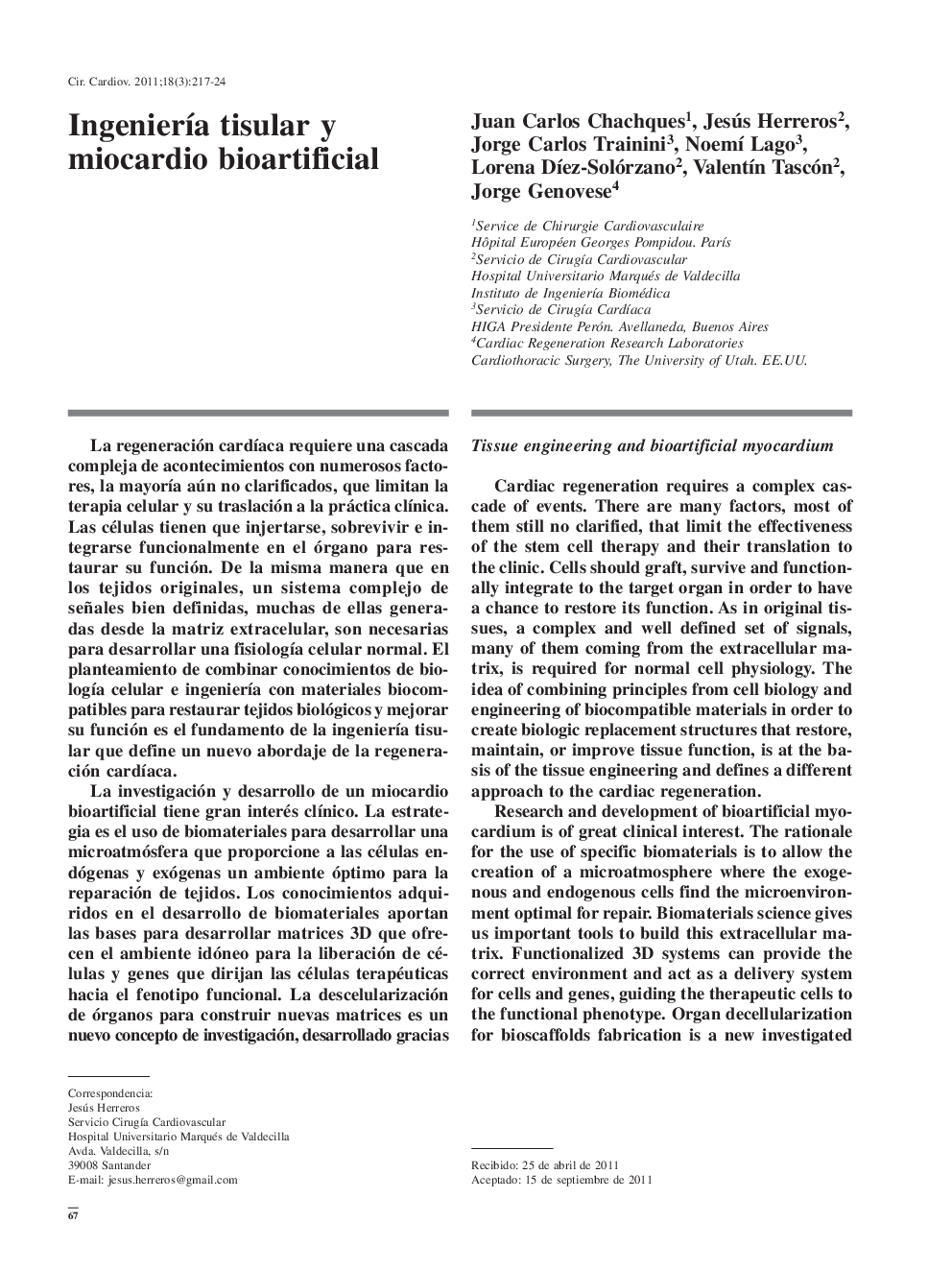| کد مقاله | کد نشریه | سال انتشار | مقاله انگلیسی | نسخه تمام متن |
|---|---|---|---|---|
| 2907858 | 1174029 | 2011 | 8 صفحه PDF | دانلود رایگان |

La regeneración cardíaca requiere una cascada compleja de acontecimientos con numerosos factores, la mayoría aún no clarificados, que limitan la terapia celular y su traslación a la práctica clínica. Las células tienen que injertarse, sobrevivir e integrarse funcionalmente en el órgano para restaurar su función. De la misma manera que en los tejidos originales, un sistema complejo de señales bien definidas, muchas de ellas generadas desde la matriz extracelular, son necesarias para desarrollar una fisiología celular normal. El planteamiento de combinar conocimientos de biología celular e ingeniería con materiales biocompatibles para restaurar tejidos biológicos y mejorar su función es el fundamento de la ingeniería tisular que define un nuevo abordaje de la regeneración cardíaca.La investigación y desarrollo de un miocardio bioartificial tiene gran interés clínico. La estrategia es el uso de biomateriales para desarrollar una microatmósfera que proporcione a las células endógenas y exógenas un ambiente óptimo para la reparación de tejidos. Los conocimientos adquiridos en el desarrollo de biomateriales aportan las bases para desarrollar matrices 3D que ofrecen el ambiente idóneo para la liberación de células y genes que dirijan las células terapéuticas hacia el fenotipo funcional. La descelularización de órganos para construir nuevas matrices es un nuevo concepto de investigación, desarrollado gracias al desarrollo de nanomateriales que aseguran un nicho celular apropiado para la diferenciación celular y la terapia génica o farmacológica.
Cardiac regeneration requires a complex cascade of events. There are many factors, most of them still no clarified, that limit the effectiveness of the stem cell therapy and their translation to the clinic. Cells should graft, survive and functionally integrate to the target organ in order to have a chance to restore its function. As in original tissues, a complex and well defined set of signals, many of them coming from the extracellular matrix, is required for normal cell physiology. The idea of combining principles from cell biology and engineering of biocompatible materials in order to create biologic replacement structures that restore, maintain, or improve tissue function, is at the basis of the tissue engineering and defines a different approach to the cardiac regeneration.Research and development of bioartificial myocardium is of great clinical interest. The rationale for the use of specific biomaterials is to allow the creation of a microatmosphere where the exogenous and endogenous cells find the microenvironment optimal for repair. Biomaterials science gives us important tools to build this extracellular matrix. Functionalized 3D systems can provide the correct environment and act as a delivery system for cells and genes, guiding the therapeutic cells to the functional phenotype. Organ decellularization for bioscaffolds fabrication is a new investigated concept. nanomaterials are emerging as the main candidates to ensure the achievement of a proper instructive cellular niche with good drug release/ administration properties.
Journal: Cirugía Cardiovascular - Volume 18, Issue 3, July–September 2011, Pages 217–224